Make It Real: The Long and the Short of It
It took me years to write it
They were the best years of my life
It was a beautiful song
But it ran too long
If you’re gonna have a hit
You gotta make it fit
So they cut it down to 3:05
—Billy Joel, “The Entertainer”
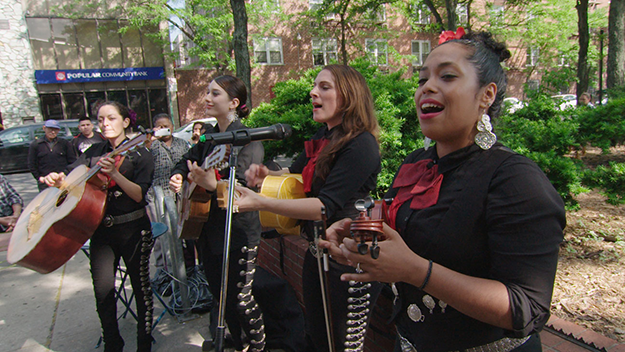
In Jackson Heights
It was terrific theater. For 18 extraordinary, excruciating minutes this past spring at the Hot Docs Film Festival, Frederick Wiseman sat across from a firing line of industry gatekeepers at the Hot Docs Forum pitch session. Call it the master and the money. Wiseman participated in the event voluntarily, perhaps even hopefully, though not happily. (The night before, during a more congenial public discussion about his work, he tersely said of the impending Forum: “I’d rather not express my opinion about the event.”) With financing for his films not as robust or reliable as it used to be, Team Wiseman took to this open appeal, and later to an unsuccessful Kickstarter campaign, in search of finishing funds for his Queens-set film, In Jackson Heights (which recently had its world premiere at the Venice Film Festival).
This sort of discomfiting sight is not uncommon at these events, which play as a public flaying more often than they end in a coronation. But rarely do you see a filmmaker this established in this setting, and what made the scene truly dramatic was that even up against two-dozen representatives of the documentary world’s leading broadcasters, distributors, funders, and financiers, Wiseman proved to be a formidable force. And so when, in the final moments of the discussion, someone went there with the maestro and questioned the inconvenient length of his films, it was as close as we’re likely to come to a candid, honest reckoning with how and why art gets shaped by commerce both here and abroad.
After a series of hosannas and “let’s talk after the session” comments from the panel, Jason Spingarn-Koff, then still managing the Op-Docs program for The New York Times, deadpanned that Wiseman’s films are usually roughly two-and-a-half hours longer than the longest short ever presented in his series. From there, Mette Hoffman Meyer of the Danish Broadcasting Corporation took the ball and ran with it, lamenting that she could only show his films in their entirety late at night. “I think you should think about making [In Jackson Heights] 90 minutes so that it could be shown in primetime in all these European countries, because otherwise there’s little audience,” Meyer said. “Your films are wonderful, but very few see them because they’re so long. I would encourage you to at least think about making the films shorter.” It’s a clichéd phrase, but I assure you that a hush really did fall over the room.
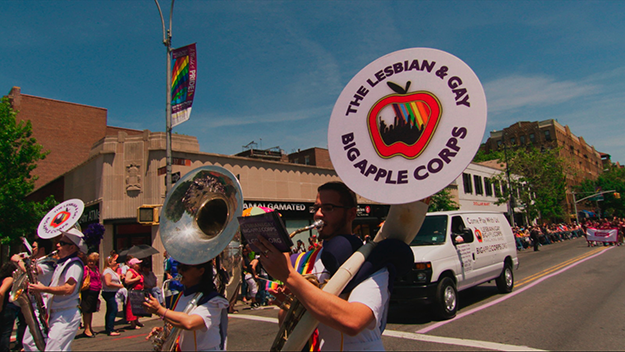
In Jackson Heights
“Certainly there’s a paradox involved,” Wiseman began, sounding a small note of practiced conciliation before continuing. “Perhaps one of the reasons people like my films is because they’re complex explorations of complicated subjects. I try not to simplify them in service of reaching,” he said, before backing up to form a more perfect rejoinder, “of having some fantasy about reaching a larger audience. My obligation, my first obligation, is to the people who gave me permission to make the film, to represent their experience as accurately as possible. Sometimes, because of the nature of the subjects, that makes them long.” This was followed by robust applause, the first such response to a pitcher-panelist parry I’ve ever witnessed in that kind of setting.
Now, there are two sides to this exchange, or to borrow Wiseman’s conception, two paradoxes in play. Firstly, it wasn’t hostility to artistic freedom that drove Meyer’s line of questioning, but rather the constrictions of the company for which she works, and for whom she’s tasked with programming films suited to their schedule. Similar things could be said of every other broadcasting, distribution, and funding rep in that room. Each has an assignment, a mission to find pieces that fit some larger puzzle—be it a style, taste, season, slate, or demographic. Everybody wants to back and showcase good films, but most everyone also has obligations that exceed simply honoring the call for good films. Failing to serve those obligations puts one’s job at risk, at which point one is helpless to honor the art form in any way. If the mission is to program documentaries for tidy and predictable slots—say, 90 minutes—Wiseman’s films simply don’t fit the plan. Thus, considering her avowed appreciation for his films, of course Meyer wishes Wiseman would work in a shorter form.
Spectacle aside, the only thing remarkable about this is that a wish for a shorter running time was raised instead of an outright demand. It’s standard practice for documentary films to be chopped up into various sizes to satisfy the requirements of broadcasters. That’s because according to this vestige of an outmoded, pre-streaming TV era, feature-length nonfiction films should take the shape of television programs, even if it’s obvious that what’s being shown is a film and not a news magazine segment—no small matter in an era when documentary features are a more desirable and reputable asset than a news magazine segment. And so you have artists who are contractually obligated—contracts that are crucial for having their films seen by these audiences as well as for recouping production costs—to rejigger their art, and effectively cede editorial control to an outside party. (Wiseman’s contract with PBS, which has long broadcast his films in the U.S., stipulates that his features are not to be edited down or broken into an episodic series.) Reader’s Digest has twice filed for bankruptcy this century, but its meddlesome, condescending mentality is still going gangbusters on public television.
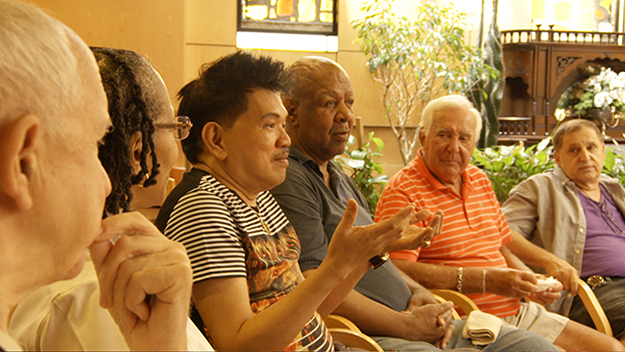
In Jackson Heights
You can see how filmmakers without Wiseman’s clout or reputation would have no choice but to accede to this practice. You can also see how even a filmmaker of Wiseman’s clout and reputation still has to answer to it. I’m reminded of a line from The Right Stuff, in which David Clennon’s liaison man asks Harry Shearer’s NASA recruiter why the government’s not interested in pursuing the greatest pilot in the world, Chuck Yeager: “You mean for this ‘space race’ you don’t want our best pilots?” “I didn’t say that,” the recruiter clarifies. “We want the best pilots… that we can get.”
It doesn’t have to be thus. Not when viewing platforms and practices are evolving beyond this mold it-box it-ship it approach. And not when broadcasters have always found ways to accommodate worthwhile programming that goes on a bit long, from annual presentations of The Ten Commandments and The Sound of Music to weekly football games and the odd Mad Men over-spillage. Where there’s a will, there’s a way, saith the proverb, and indeed it’s a problem of wills, not ways. (Insert digression about Avatar and The Hobbit, and about which kinds of filmmakers are above reproach in this department.) Could there have been a program less accommodating of the clock than Spike Lee’s When the Levees Broke, which totaled nearly four-and-a-half hours and was split into four unevenly timed episodes, each one lasting several brazen minutes over a clean 60? Whether HBO did so to honor the film’s subject, artist, or exquisitely calibrated musical composition, it summoned the will to deal with the unwieldy run time, and furthermore to do so in primetime.
Few documentary filmmakers have been as troubled by the implications of running times as Joshua Oppenheimer, who twice cut down The Act of Killing from a preferred cut of two hours and 40 minutes. “We finished editing the two-hour-40-minute cut, and then people started seeing it and saying this is a really important film, and we love it,” he told me early last year. “But if you want anything more than a couple of cinemas in the United States to show it, if you want a wider audience to see it, cinemas will probably take the 95-minute version, which we were obliged to make for broadcasters. But we didn’t want that to happen. We wanted more of the film to be accessible to a wider audience. So we decided to make a two-hour version whose architecture and pace is perhaps closer to the 95-minute version than to the 2 hour 40 min version.” It’s hard to argue against that strategy, because the shortened version of The Act of Killing did reach a surprisingly sizeable theatrical audience and received an Oscar nomination. Yet I’ve heard Oppenheimer speak on numerous occasions since then, and he never fails to emphasize that the original cut of the film is the definitive cut of the film, and that those who’ve seen the shorter version haven’t seen the film as it was intended to be seen. His vision was compromised, and though he compromised it willingly, and evidently benefited from that compromise, it clearly hasn’t sat well with him.
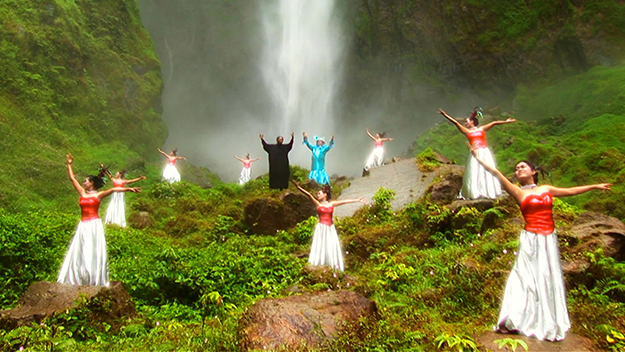
The Act of Killing
If The Act of Killing hadn’t been Oppenheimer’s first feature, perhaps he’d not have felt the pressure to cut down his art for the sake of, in Wiseman’s words, “having some fantasy about reaching a larger audience.” Except Oppenheimer did reach a larger audience, which might help explain why his masterful follow-up, The Look of Silence, came in at a far tidier, theatrical, and broadcast-palatable one hour and 43 minutes, a full hour shorter than the preferred cut of its predecessor. Now, I’d act as a human shield to prevent a single frame of that film from being touched, but I feel the same way about the three-hour National Gallery, the 10-hour-13-minute Shoah (cut down to eight hours and 23 minutes for U.S. broadcast, crucial I’m sure for reaching that wider audience), and Guy Maddin’s six-minute The Heart of the World. “Ideally films have their own natural length,” Oppenheimer told me, and you’d hope he was stating the obvious.
In the quote above, Wiseman talks of accurately representing the lives of those he films, and that often entails longer scenes in which the contours of personality and labor can become apparent. He’s never just pointing the camera and letting scenes play out—he’s shaping things to give that illusion. Witness any of the lectures in National Gallery, or the faculty meetings in At Berkeley, all of which feel complete yet never are. But even that illusion takes time, especially when he’s crafting a narrative about an entire community. To monkey with that would result in something akin to what Oppenheimer experienced in the shortening of The Act of Killing. “In the longer cut, it’s just a little bit slower, and there are more pauses, intimate pauses. We rest with the characters, and we take in the horror, and we feel that horror,” he said. “When you speed up the film, you lose those pauses, so it becomes less of an intimate and less immersive experience, and when you speed up the reenactments, you become less immersed in the evolving nightmare of them, just a little bit, and your position as a viewer becomes more like somebody watching these men as they reenact what they’ve done, as opposed to being immersed in that nightmarish surreal reality.”
If you in any way accept Andrei Tarkovsky’s assertion that cinema is “sculpting in time,” all of this meddling with film running times is no minor matter, but rather a violation of the very medium of the art. Yes, there are business concerns. And yes, it’s easier to book and broadcast films that adhere to a predictable, modular length. Much as it’s easier to fit a dozen Giacometti sculptures into a gallery space than a single Richard Serra. There are costs to working with unwieldy sizes and materials, but if a curator thinks the work is worthwhile, doesn’t she try to find ways of accommodating (and marketing) it rather than ask the artist to lop off a chunk of the original object? Isn’t it time for documentaries to be seen as—and for their makers to own them as being—works of art with their own internal integrity?
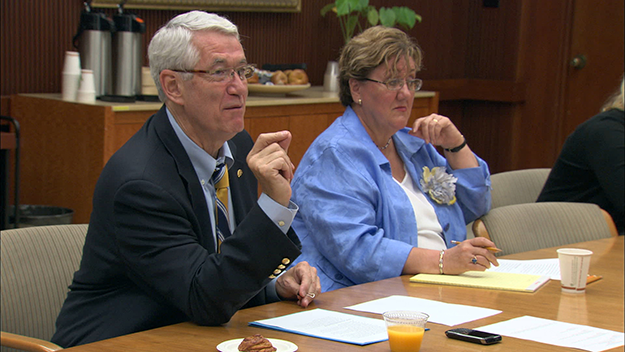
At Berkeley
I’m not saying these films are perfect, or that the process of shaping and refining a film isn’t a fraught one. But if Fred Wiseman feels that his film needs to be four hours long, and he’s willing to accept the possible limitations on audience engendered by that length, why should anyone question it? The real question is why, if so many of us respect the art and artist—specifically in this case and in principle—we don’t find more ways of building a bigger box for the work rather than asking it to fit into ones we’ve already got. Break down a wall in the gallery. Push back that episode of Nova for a night. Don’t assume that the audience won’t be there. Why not put more effort into telling your audience how the art is worth those extra minutes, instead of asking the art to conform to your own needs, and to the supposed needs of an audience? And with so much changing theatrically, in broadcasting, and online, with viewing habits evolving in ways that are often unanticipated and not intuited, why not spend a minute considering how to better serve the films as they are instead of telling me how naïve I am about a business that, the last time I checked, is a swiftly, wildly moving target?



